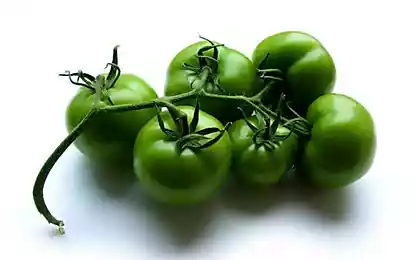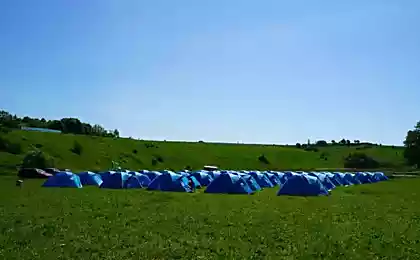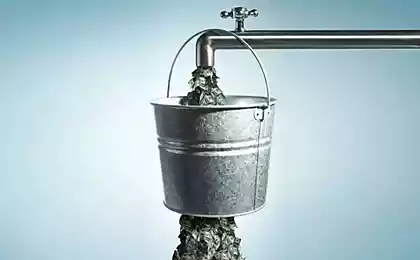556
How to choose non-toxic household chemicals
Everyday chemistry — an undoubted achievement of civilization. Without it difficult to do. However, keeping clean, we underestimate the harm that chemicals can cause to our health. The most used synthetic detergents contain hazardous substances that cause irritation and inflammation of the mucous membranes of the eyes and nose, difficulty breathing, coughing and asthma attacks, increase the risk of allergies and even cancer.

Before buying detergents pay attention to their ingredients listed on the packaging and read the instructions carefully. Do not use household chemicals containing chlorine, chlorine-organic compounds, phosphates and phosphonates — these substances are dangerous to the environment and often to human health.
There are other criteria of safe household chemicals. In the same textbook contains a list of companies producing and/or implementing household chemicals that meet certain criteria, for example, the content of natural components, Biodegradability.
The most secure, you can take the funds that are as broken down in the environment into safe components. Use safe household chemicals Chemical safety of Chlorine and its organic compounds can cause diseases of the cardiovascular system, promote the occurrence of atherosclerosis, anemia, hypertension, can negatively affect the condition of skin and hair. They also increase the risk of Allergy and, in some cases, the risk of cancer. In the EU, the majority of chlorinated compounds prohibited for use since 1987.
Phosphates and phosphonates are found in most detergents as a water softener and can cause allergic skin reactions and respiratory tract. In addition, the phosphates getting into natural water bodies serve as fertilizer for algae and cause a bloom, which leads to the death of most of their inhabitants. Currently, many manufacturers refuse from household chemicals, phosphate supplements, replacing them with more environmentally friendly substances — zeolites and polycarboxylate.
The names of most chemical terms say little to the uninitiated, so we'll show you.
In addition to chlorine, phosphates and phosphonates opasnet are:Anionic surfactants (detergents and washing powders). Surface-active substances (surfactants) clean the dishes and surfaces from dirt (detergents) and are also used in washing powders. Surfactants are of three major types: anionic, cationic and nonionic. The most dangerous — anionic (surfactants). They cause immune system disorders, allergies, brain damage, liver, kidneys, lungs. Keep in mind when using detergents, the surfactant is transferred into the body, as even a tenfold rinsing in hot water does not fully extinguish the dishes from chemicals. To reduce the harmful effects, use of funds, in which the content of the surfactant is less than 5%.
Sodium hypochlorite — sodium hypochlorite (bleach). Chlorine is very dangerous, but the chemical is highly unstable and is easily "releases" chlorine. He is the cause of cardiovascular disease, promotes the formation of atherosclerosis, anemia, hypertension, allergic reactions, affects the skin and hair, increases the risk of cancer.
Petroleum distillates (in metal polishes for surfaces): short term exposure can cause temporary visual disturbances; long-term exposure leads to disorders of the nervous system, kidneys, eyes and skin diseases.
Ammonia (cleaning agent for glass surfaces) leads to irritation of eyes, respiratory tract, causes headaches.
Phenols and Cresols (bactericides) are very caustic and cause diarrhea, dizziness, loss of consciousness, and dysfunction of the liver and kidney.
Nitrobenzene (Polish for floors and furniture): causes skin discoloration, shortness of breath, vomiting, and in severe cases, death; exposure to this substance causes cancer, it causes birth defects in children.
Formaldehyde (preservative in many different products): is a carcinogen; causes severe irritation of eyes, throat, skin, respiratory tract and lungs.
In addition, try to avoid chemical products with the following icons:
Razdrazhajushche a rule, this icon can be found on jars with a variety of cleaning products and detergents. In case of contact with eyes and skin this product may cause itching, irritation and even inflammation. Should avoid contact with eyes and wash hands thoroughly after working with this substance. Try also to work in a well ventilated area — the fumes of these products can cause coughing and inflammation of the respiratory tract.
Srednyachok icon is often found on the packaging of solvents, varnishes and paints. He says that the product contains one or more harmful or toxic substances.
Etkiledigi can be, for example, various means for cleaning sewer pipes. The warning icon indicates that the product is alkaline or acid in high concentrations. Which means, in contact with the skin can cause severe burns and serious damage to the skin, muscle and mucosa. When working with such products it is necessary to wear gloves.Dangerous for the environment
This symbol warns of hazards of the product for the environment. Its composition may include substances that create a threat to the life of living organisms — aquatic and terrestrial.
If possible, use safer alternative chemicals.
After all, to achieve perfect cleanliness and Shine is quite possible and natural remedies, without resorting to chemistry. For example:
The plunger can deal with a clogged toilet is not worse than the special chemicals.
Baking soda is a natural means through which the dishes can be brought to Shine. Soda will help you to effectively deal with stains, clean and Polish aluminum, chrome, silver, steel, tin and plastic surfaces, as well as jewelry. It can be used for cleaning and deodorizing refrigerators, heavily soiled and smelly carpets, upholstery on furniture and vinyl. Soda also softens fabrics and removes certain types of stains. Baking soda softens hard water, so it can help to take a relaxing bath. Soda can be used as a body deodorant and as toothpaste, can be used as a descaler.
Lemon juice can be used to remove rust stains from dishes and polishing silverware. Lemon can be used when washing the glass and remove stains from aluminum, clothes and porcelain. Lemon juice can also bleach when exposed to sunlight
The fans of pleasant odors should go with air fresheners on natural oils and essences (lemon, eucalyptus, fir, orange, lavender). In order to refresh the air in the room, you can use special aromatic lamps, which include a maximum of 20 minutes, then there previously only a few drops of aromatic essences.
Vinegar effectively removes wax spots and stains from all kinds of resins, fine disinfects (pure vinegar can be safely used for processing toilet), cleans tile, tile (only do not forget then ventilate the room), removes scale (fill the kettle with water a little vinegar, stir, rinse and go!). In addition, the vinegar can be prepared effective and safe "liquid for washing of glasses", which perfectly cleans and leaves no residue. You need to do is to dilute two teaspoons of vinegar in 1 liter of water. With the help of vinegar can clean brick and stone.
Borax. It is a natural mineral that is soluble in water. Borax prevents the formation of mildew and mold, improves the cleaning properties of Soaps and other cleaning agents, removes stains, and if it is mixed with sugar or something sweet, it will be possible to deal with cockroaches.
Cornstarch is made from corn and can be used for cleaning Windows, polishing furniture, cleaning carpets and nekrahmalistye clothes.
Source: /users/78

Before buying detergents pay attention to their ingredients listed on the packaging and read the instructions carefully. Do not use household chemicals containing chlorine, chlorine-organic compounds, phosphates and phosphonates — these substances are dangerous to the environment and often to human health.
There are other criteria of safe household chemicals. In the same textbook contains a list of companies producing and/or implementing household chemicals that meet certain criteria, for example, the content of natural components, Biodegradability.
The most secure, you can take the funds that are as broken down in the environment into safe components. Use safe household chemicals Chemical safety of Chlorine and its organic compounds can cause diseases of the cardiovascular system, promote the occurrence of atherosclerosis, anemia, hypertension, can negatively affect the condition of skin and hair. They also increase the risk of Allergy and, in some cases, the risk of cancer. In the EU, the majority of chlorinated compounds prohibited for use since 1987.
Phosphates and phosphonates are found in most detergents as a water softener and can cause allergic skin reactions and respiratory tract. In addition, the phosphates getting into natural water bodies serve as fertilizer for algae and cause a bloom, which leads to the death of most of their inhabitants. Currently, many manufacturers refuse from household chemicals, phosphate supplements, replacing them with more environmentally friendly substances — zeolites and polycarboxylate.
The names of most chemical terms say little to the uninitiated, so we'll show you.
In addition to chlorine, phosphates and phosphonates opasnet are:Anionic surfactants (detergents and washing powders). Surface-active substances (surfactants) clean the dishes and surfaces from dirt (detergents) and are also used in washing powders. Surfactants are of three major types: anionic, cationic and nonionic. The most dangerous — anionic (surfactants). They cause immune system disorders, allergies, brain damage, liver, kidneys, lungs. Keep in mind when using detergents, the surfactant is transferred into the body, as even a tenfold rinsing in hot water does not fully extinguish the dishes from chemicals. To reduce the harmful effects, use of funds, in which the content of the surfactant is less than 5%.
Sodium hypochlorite — sodium hypochlorite (bleach). Chlorine is very dangerous, but the chemical is highly unstable and is easily "releases" chlorine. He is the cause of cardiovascular disease, promotes the formation of atherosclerosis, anemia, hypertension, allergic reactions, affects the skin and hair, increases the risk of cancer.
Petroleum distillates (in metal polishes for surfaces): short term exposure can cause temporary visual disturbances; long-term exposure leads to disorders of the nervous system, kidneys, eyes and skin diseases.
Ammonia (cleaning agent for glass surfaces) leads to irritation of eyes, respiratory tract, causes headaches.
Phenols and Cresols (bactericides) are very caustic and cause diarrhea, dizziness, loss of consciousness, and dysfunction of the liver and kidney.
Nitrobenzene (Polish for floors and furniture): causes skin discoloration, shortness of breath, vomiting, and in severe cases, death; exposure to this substance causes cancer, it causes birth defects in children.
Formaldehyde (preservative in many different products): is a carcinogen; causes severe irritation of eyes, throat, skin, respiratory tract and lungs.
In addition, try to avoid chemical products with the following icons:
Razdrazhajushche a rule, this icon can be found on jars with a variety of cleaning products and detergents. In case of contact with eyes and skin this product may cause itching, irritation and even inflammation. Should avoid contact with eyes and wash hands thoroughly after working with this substance. Try also to work in a well ventilated area — the fumes of these products can cause coughing and inflammation of the respiratory tract.
Srednyachok icon is often found on the packaging of solvents, varnishes and paints. He says that the product contains one or more harmful or toxic substances.
Etkiledigi can be, for example, various means for cleaning sewer pipes. The warning icon indicates that the product is alkaline or acid in high concentrations. Which means, in contact with the skin can cause severe burns and serious damage to the skin, muscle and mucosa. When working with such products it is necessary to wear gloves.Dangerous for the environment
This symbol warns of hazards of the product for the environment. Its composition may include substances that create a threat to the life of living organisms — aquatic and terrestrial.
If possible, use safer alternative chemicals.
After all, to achieve perfect cleanliness and Shine is quite possible and natural remedies, without resorting to chemistry. For example:
The plunger can deal with a clogged toilet is not worse than the special chemicals.
Baking soda is a natural means through which the dishes can be brought to Shine. Soda will help you to effectively deal with stains, clean and Polish aluminum, chrome, silver, steel, tin and plastic surfaces, as well as jewelry. It can be used for cleaning and deodorizing refrigerators, heavily soiled and smelly carpets, upholstery on furniture and vinyl. Soda also softens fabrics and removes certain types of stains. Baking soda softens hard water, so it can help to take a relaxing bath. Soda can be used as a body deodorant and as toothpaste, can be used as a descaler.
Lemon juice can be used to remove rust stains from dishes and polishing silverware. Lemon can be used when washing the glass and remove stains from aluminum, clothes and porcelain. Lemon juice can also bleach when exposed to sunlight
The fans of pleasant odors should go with air fresheners on natural oils and essences (lemon, eucalyptus, fir, orange, lavender). In order to refresh the air in the room, you can use special aromatic lamps, which include a maximum of 20 minutes, then there previously only a few drops of aromatic essences.
Vinegar effectively removes wax spots and stains from all kinds of resins, fine disinfects (pure vinegar can be safely used for processing toilet), cleans tile, tile (only do not forget then ventilate the room), removes scale (fill the kettle with water a little vinegar, stir, rinse and go!). In addition, the vinegar can be prepared effective and safe "liquid for washing of glasses", which perfectly cleans and leaves no residue. You need to do is to dilute two teaspoons of vinegar in 1 liter of water. With the help of vinegar can clean brick and stone.
Borax. It is a natural mineral that is soluble in water. Borax prevents the formation of mildew and mold, improves the cleaning properties of Soaps and other cleaning agents, removes stains, and if it is mixed with sugar or something sweet, it will be possible to deal with cockroaches.
Cornstarch is made from corn and can be used for cleaning Windows, polishing furniture, cleaning carpets and nekrahmalistye clothes.
Source: /users/78























